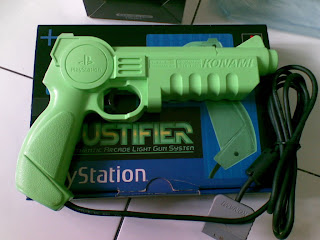 I had to choose between the Supergun or the CMVS but when I saw a Neo Geo board for cheap (35 shipped), I had made my choice.
I had to choose between the Supergun or the CMVS but when I saw a Neo Geo board for cheap (35 shipped), I had made my choice.When you consolize a MVS, you mainly need 3 things:
- A MVS board (check).
- A power supply. I acquired a couple with the correct rating last year so I was already set for that (check).
- A video encoder (not check).
- JRok - http://jrok.com/hardware/RGB.html
- JMKurtz - http://neobitz.com/
- Y-Plus - http://www.arcademvs.com/ARCADE_ACESSERIOR.htm (Product A-22)
So I went with the Neobitz encoder. I got better service from him and the board arrived while I was on vacation (good thing it's small, it was in the mailbox, not on my front door step). Shipped, that small thing was 100$ US.
 The last thing I was missing was a controller. Another good thing about MVS boards is that some of them come with controller connector, like SNK was expecting people to use the board in different way than in an arcade cabinet. So ordering a controller on eBay was not too difficult, the only issue I had was that I payed more for shipping than for the controller itself.
The last thing I was missing was a controller. Another good thing about MVS boards is that some of them come with controller connector, like SNK was expecting people to use the board in different way than in an arcade cabinet. So ordering a controller on eBay was not too difficult, the only issue I had was that I payed more for shipping than for the controller itself. Once you have all this, you still need a couple of things, but nothing that can't be found at your local part store (I go to http://www.active123.com/ for most of my stuff, except LEDs, one LED for 5$ is not a good deal).
Here's a final picture with everything needed. The Neo Geo cart is kind of a given, since you do need something to test. The output connectors were included with the video encoder so that was nice as I didn't really want to make a Digi-Key order (I find their order system to be a pain if you don't have the part number).
Of course, the board was first tested in my own arcade cabinet and once I was satisfied with it (took 30sec), I was ready to start building !
And that will all be covered in the next post !






